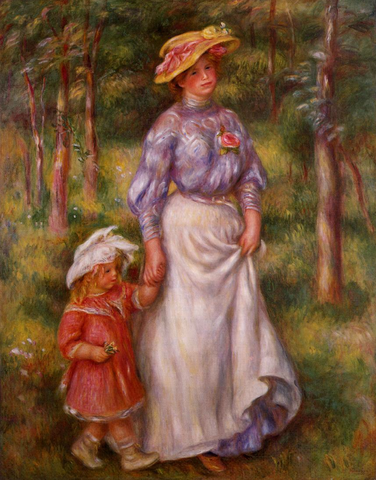Albert Coombs Barnes (January 2, 1872 – July 24, 1951) was an American chemist and art collector. Barnes was known as an eccentric figure who had a passion for educating the underprivileged. He created a special relationship with Lincoln University, a historically black college in the area, and gave the university a strong role in administration of his foundation.
From the Philadelphia Inquirer "Did Alfred Barnes Close Or Open Doors To Art? He Always Was Open To Blacks," published on 30 September 1988 by Carl Burrowes: No mortal could have planned such an exquisite revenge. Not even Albert Barnes, portrayed by so many as an evil genius.
Ever the iconoclast, Barnes has managed to jolt genteel Philadelphia even after death, this time by breaking a tradition that funnels endowments only to institutions that are already heavily endowed. If only some of his detractors would try to upstage him now.
Barnes' $1 billion indenture to Lincoln University, staggering as it is in
financial terms, is richer still in symbolism. This treasure trove of Western cultural artifacts comes, as fate would have it, while the college is headed by a black female anthropologist!
Barnes's collection grew to house 69 Cézannes—more than in all the museums in Paris—as well as 60 Matisses, 44 Picassos, and an astonishing 181 Renoirs. The 2,500 items in the collection include major works by (among others) Rousseau, Modiggliani, Soutine, Seurat, Degas, and van Gogh. The entire collection is estimated today to be worth between $20 and $30 billion.[1] Although John D. Rockefeller and Andrew Carnegie were vastly wealthier than Albert Barnes, the Barnes Foundation has assets 10 to 20 times greater than either the Carnegie Corporation or the Rockefeller Corporation.
Barnes' Main Line critics, in their smugness, may imagine it as another nose thumb at them. To his friends in other places, this merely caps a lifelong commitment to the disadvantaged. One could say Barnes regularly afflicted the comfortable because he consistently comforted the afflicted.
Barnes first announced plans to turn his foundation into a center for black education in 1927. In those days of Jim Crow, this gesture of generosity to one part of the community was perceived as a "threat" by others. Even now, many fail to see the connection between that promise and its fulfillment 61 years later.
Barnes' ties to the black community went well beyond attending black spiritual concerts as a poor boy in Kensington. Lincoln students have had access to the rich collection of the foundation almost from the day the doors first opened.

Throughout the 1920s, Barnes regularly contributed to the National Urban League - money as well as articles to Opportunity, the League's monthly. A special 1929 issue of the magazine, devoted to African-American visual arts, carried contributions from four foundation staffers.
Barnes' enthusiasm for black art was reportedly fueled by his close friend, Paul Guillame, a French gallery owner and early student of African art. One of the foundation's first publications was Guillame's Primitive Negro Sculpture in 1926.

Barnes would publish his research on black art in a series of speeches and papers. One article, entitled "Negro Art and America," appeared in The New Negro, edited by fellow Philadelphian Alain Locke.
That anthology ignited the cultural flowering that came to be known as the ''Negro Renaissance." In it Barnes argued that African-Americans, through poetry and music, were "revealing to the rest of the world, the essential oneness of all human beings."

When the renaissance story is fully told, Barnes' impact may prove more important than the more celebrated New York dilettantes. The list of foundation alumni includes Russell T. Gordon, Humbert Howard, Raymond Sanders and John Brantley Wilder, a virtual "Who's Who" of black Philadelphia artists.
To African- Americans, Barnes offered neither a "civilizing" influence nor philanthropy at a distance. His was a friendship rooted in knowledge and respect. He would as readily treat visitors from Paris to the singing of a black children's choir as he would expose black youths to the cultural gems of Paris.

This respect was regularly reciprocated, as in 1943 when the Pyramid Club, a leading black social center, honored Barnes at its third annual art exhibition. This was an audience for whom his message had always carried a non-threatening, life-affirming resonance. Among the major exhibitors were some of his students from 10 years earlier.
In his lifetime, Barnes saw his early estimation of the European Impressionists win wide acceptance. So too his theories of art appreciation derived from philosopher John Dewey. With Lincoln's assumption of control over his foundation, he presses forward another cause: Perhaps the once underprivileged will now be treated with a little more dignity by those in the art world he once derided as "reactionary stuffed shirts". (source: Philadelphia Inquirer, 1988)
The Art of the Steal from Pia Arvisu on Vimeo.


http://www.azreporter.com/news/index.php?itemid=1394
ReplyDeletehttp://www.sacbee.com/2012/05/21/v-print/4505419/philadelphias-barnes-museum-becomes.html
http://www.barnesfriends.org/files/news.html
http://online.wsj.com/article/SB10001424052702303936704576397591560905516.html